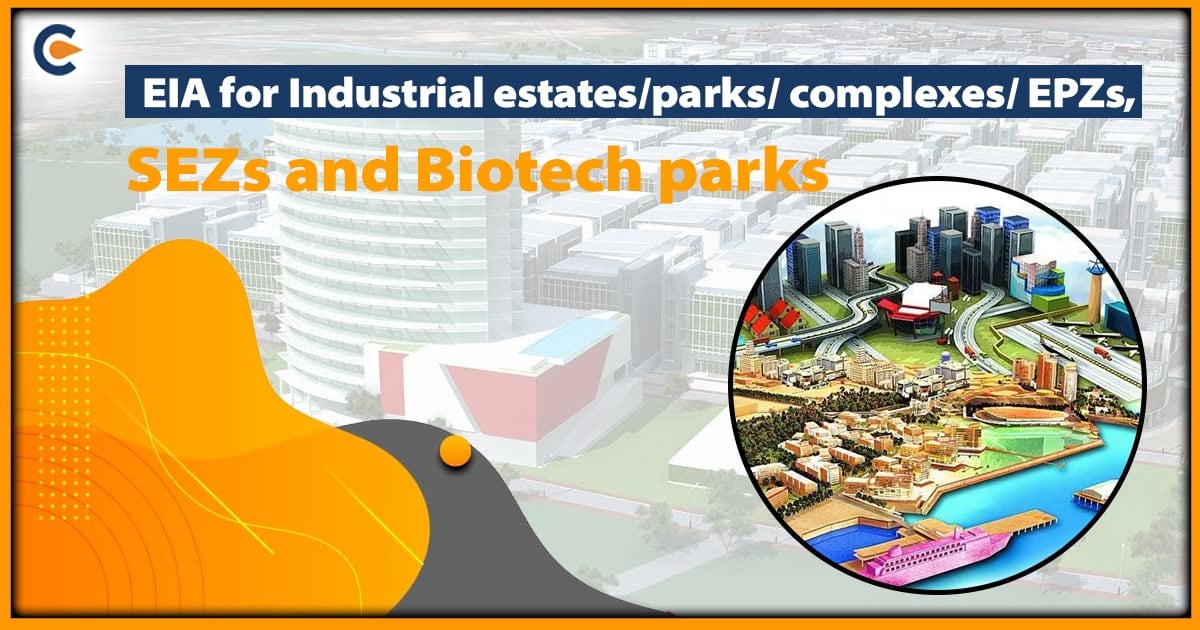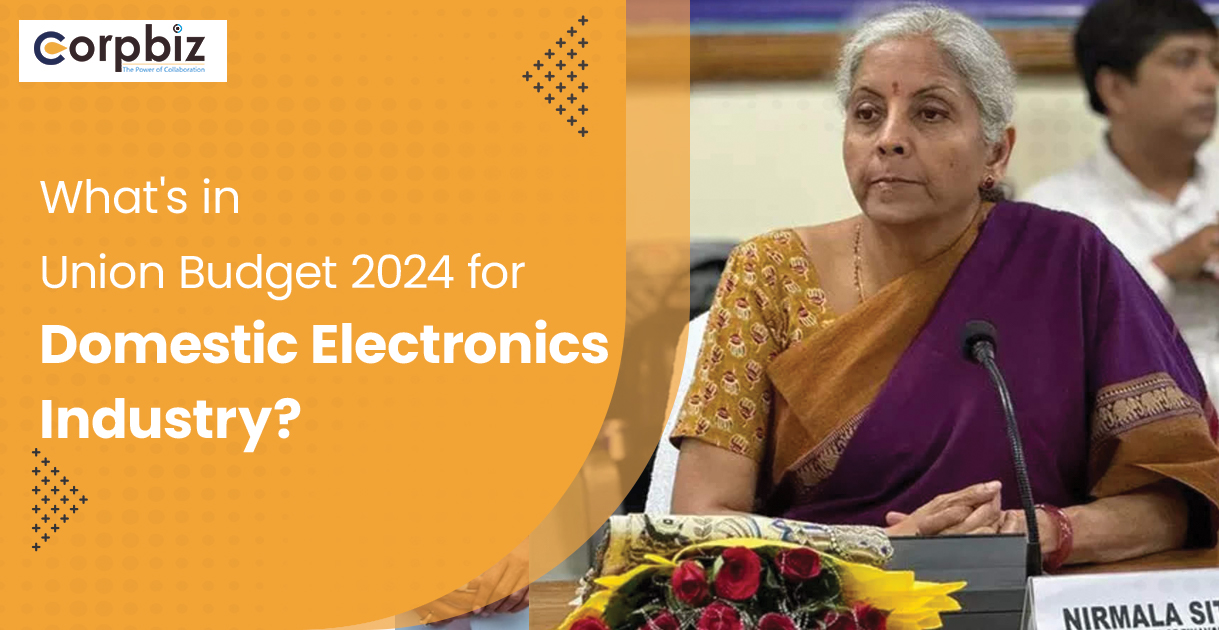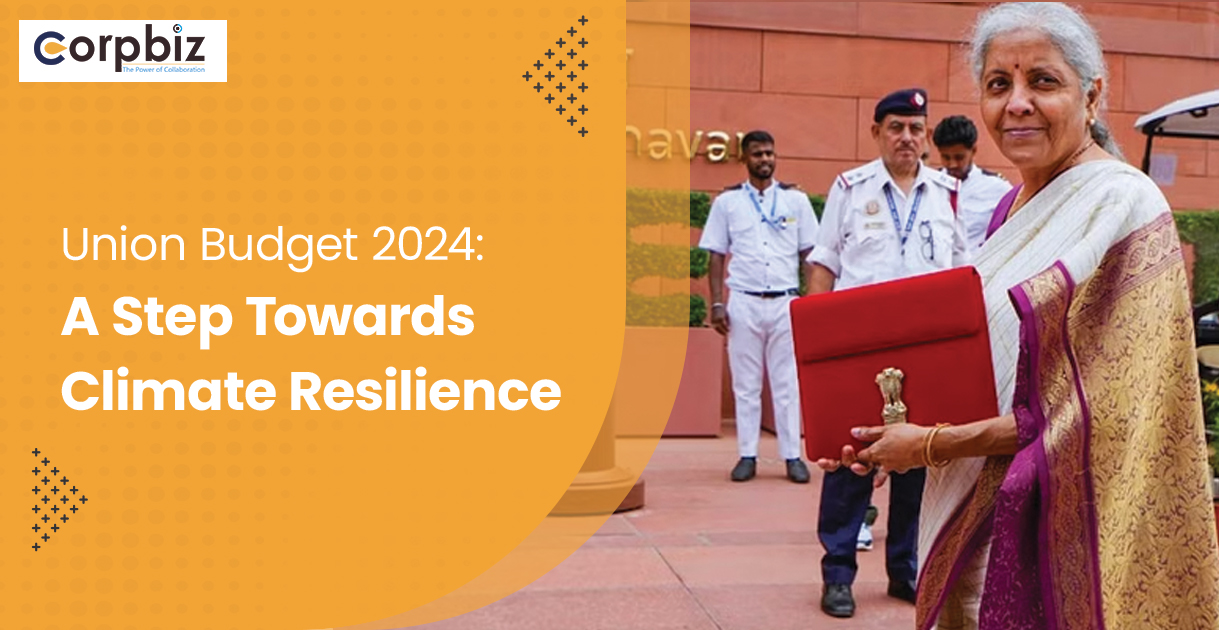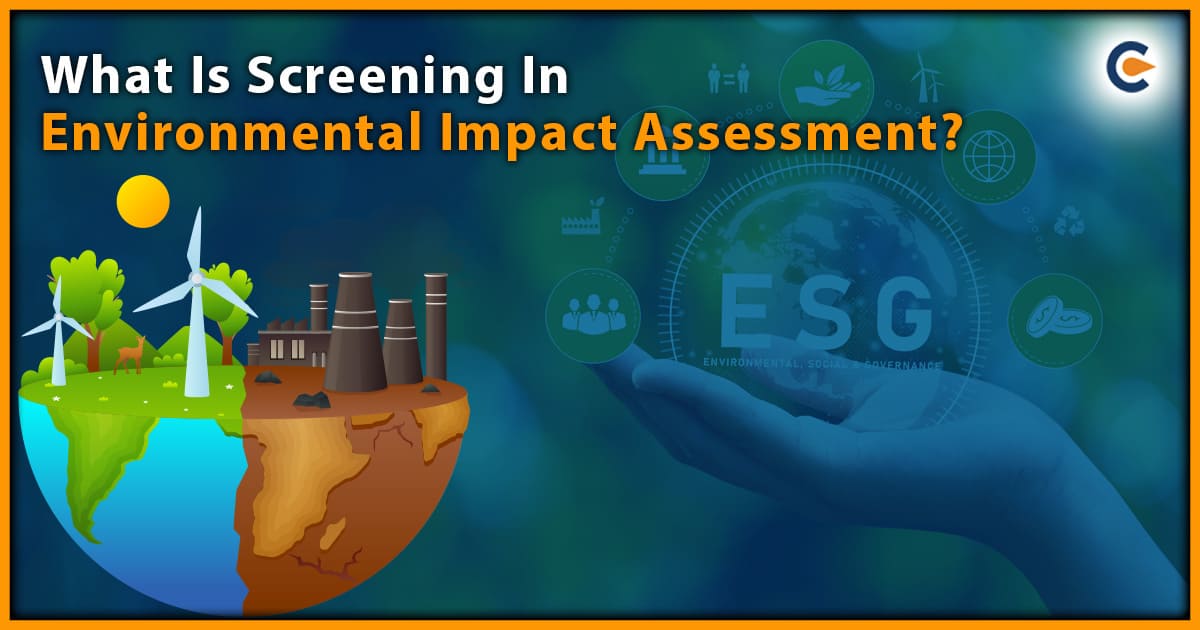Assessing and reducing the effects of human activity on the environment, particularly that associated with the expansion of infrastructure and industry, is the goal of environmental clearance. It is essential to prevent or reduce environmental damage while enabling the country’s development.
India has a strong legal structure that governs the environmental clearance procedure. Important environmental legislation mandates that projects receive environmental approval before starting, such as the Wildlife Protection Act of 1972 and the Environmental Impact Assessment (EIA) Notification of 1994.
Importance of Prior Environmental Clearance
Every country’s sustainable development landscape is shaped in large part by environmental clearing. Stopping their careless exploitation protects them for coming generations. Infrastructure and industrial development projects, in particular, frequently have detrimental effects on the environment. The process of obtaining environmental clearance necessitates a comprehensive evaluation of these effects and forces project sponsors to put mitigation or elimination plans into action. Environmental clearing promotes conscientious development, highlighting the significance of balancing economic advancement with the conservation of the environment.
What is EIA?
The process of assessing a project’s potential environmental effects while accounting for interrelated positive and negative effects on human health, culture, and socioeconomic status is known as EIA. Before making a decision, a project’s environmental, social, and economic implications are determined through the EIA according to UNEP.
EIA aims to develop solutions to avoid adverse effects, shape projects to match the local environment, predict adverse environmental impacts beforehand during the planning and design process, and present options and predictions to decision-makers.
An environmental, economic, and social impact assessment (EIA) is a tool used to evaluate a project’s potential benefits and drawbacks. This is used to forecast a project’s environmental effects at the pre-planning phase so that actions can be made to reduce the negative effects.
Objectives of EIA for Industrial Estates
Some of the key objectives of EIA for industrial estates are:
1. Environment Preservation:
EIA for industrial estates help in preserving environment. By identifying possible risks and hazards connected to the industrial estate, the EIA process contributes to the preservation of both the environment and human health. Using the right management and mitigation strategies, this knowledge can help reduce or eliminate these risks.
2. Stakeholder Engagement:
Local communities and other interested parties can participate in decision-making and express their concerns through the EIA process. This ensures that the project is acceptable to all parties involved and encourages decision-making that is transparent. EIA for industrial estates helps in the engagement of shareholders.
3. Identification of Environmental Risks and Impact:
The EIA procedure aids in determining possible environmental effects of the industrial estate, including noise pollution, changes in land use, and contamination of the air and water. Afterwards, these effects can be managed with suitable mitigating actions.
4. Regulatory Compliance:
A lot of countries have mandated that industrial projects go through an EIA prior to being approved. This procedure guarantees that the project complies with environmental laws and guidelines. Hence, regulatory compliance is one of the vital objectives of EIA for industrial estates.
The Primary Function of Industrial Estate
The primary functions of Industrial Estate include:
- To speed up industrialization within the country.
- To generate increased national and local employment opportunities.
- To achieve a more balanced distribution of employment, production, and subsequent growth across different regions.
- To attract private investments, both domestic and international.
- To facilitate the development of small-scale domestically owned industries
EIA for Industrial Estates/Parks/Complexes/EPZs/SEZs/Biotech parks
The first Industrial Estate (IE) was established in Hadapsar, Maharashtra, in 1952, marking the beginning of the IE program in India. The primary aim of the program is to foster and facilitate the development, growth, and modernization of small-scale industries (SSI) by offering factory accommodations, shared service facilities, support, and assistance during all phases of establishment and operation. Additionally, the program aims to foster subcontracting relationships between small and large-scale industries, as well as specialized manufacturing activities.
Consequently, by providing built-in factory housing in semi-urban, rural, and underdeveloped areas with the necessary amenities and services, the program has also taken on the function of regional development. All industrial estates, parks, complexes, Export Processing Zones (EPZs), Special Economic Zones (SEZS), Biotech Parks, and Leather Complexes will be classified equally as “Industrial Estates” for the purposes of EIA Notification.
For the purpose of a group of industrialists, an industrial estate (IE) is a tract of land that has been developed and subdivided into plots in accordance with a comprehensive plan, with provisions for roads, transportation, and public utilities. The IE may or may not have built-up (advanced) factories on it, sometimes with shared facilities and other times without them.
Stages in the EIA for Industrial Estates
The stages of EIA for industrial estates are:
- Screening
The screening for the EIA for Industrial estates is conducted at the initial stage of project development to ensure that proponents know their responsibilities before making decisions regarding the budget, project design, and execution plan.
- This stage applies explicitly to Category ‘B’s developmental activities. If the general conditions for a Category B project are met, it will be treated as a Category A project.
- Additionally, screening involves the classification of Category B projects into either Category B1 or Category B2.
- Category B1 projects must follow all stages applicable to a Category A project but are processed by the State-Level Expert Appraisal Committees (SEACs) or the Union Territory- Level Expert Appraisal Committees (UTEACs).
- Category B2 projects do not necessitate an EIA or public consultation. According to the notification, the classification of Category B projects falls under the jurisdiction of the SEACS.
- Scoping for EIA Studies
The scoping exercise for EIA for Industrial estates is undertaken shortly after defining the project details. Its primary objective is identifying concerns and issues that may impact project decisions. In the case of Category ‘A’ projects, the Expert Appraisal Committees (EACs) are responsible for determining the Terms of Reference (ToR) for EIA studies, while for Category ‘B1’ projects, including applications for the expansion or modernization of existing projects, the State Expert Appraisal Committees (SEACs) perform this task. The ToR outlines the relevant environmental concerns that must be addressed in preparing an EIA report for a specific project.
- Terms of Reference (ToR)
The process for arriving at the draft ToR for EIA for industrial estates is as follows:
- The project proponent applies to the appropriate authority, attaching Form 1, a pre-feasibility report, and the proposed ToR for EIA studies.
- The pre-feasibility report concisely summarizes project details and potential environmental concerns based on secondary information.
- Based on the pre-feasibility report and Form 1, the valued environmental components (VECs) relevant to the project are identified (i.e., components of the environment or society likely to be affected by project activities/operations).
- The authority then consults the relevant EAC/SEAC to review the application form, pre- feasibility report and proposed draft ToR by the proponent. Necessary additions or deletions make it a comprehensive ToR that aligns with statutory requirements for conducting EIA studies.
- The final set of ToR for EIA studies is conveyed to the proponent by the EAC/SEAC within sixty days of receiving Form 1 and the pre-feasibility report. If the finalized ToR for EIA studies is not provided to the proponent within sixty days, the ToR suggested by the proponent is considered final and approved for EIA studies.
- The final ToR for EIA studies is displayed on the Ministry of Environment, Forest and Climate Change (MoEF) website or the State-Level Environmental Impact Assessment Authority (SEIAA).
- Environmental Management Plan
A standard Environmental Management Plan (EMP) in the EIA for Industrial estates consists of the following elements:
- A concise overview of the potential impacts associated with the proposal.
- Detailed descriptions of the recommended mitigation measures to address these impacts.
- An outline of the monitoring program designed to ensure compliance with relevant standards and assess residual impacts.
- Allocation of resources and identification of responsibilities for implementing the plan.
- An implementation schedule and reporting procedures.
- Inclusion of a contingency plan to address situations when impacts exceed initial expectations.
The EMP provides a comprehensive framework that summarizes potential impacts, suggests mitigation measures, establishes monitoring procedures, assigns responsibilities, sets timelines, and outlines contingency measures to be implemented if the impacts exceed anticipated levels.
- Reporting
The purpose of reporting of EIA for Industrial estates is as follows:
- Identifying the project and project proponent.
- It briefly describes the project’s nature, size, location, and significance to the country or region.
- Outlining the scope of the study based on regulatory scoping conducted according to the Terms of Reference (ToR).
- Project Description
Project description is simply offering a condensed description of the project’s aspects likely to have environmental effects based on the project feasibility study; it includes the following:
- Providing clear details about the project, including its type, necessity, location (through maps showing general and specific locations, project boundary, and site layout), size or magnitude of the operation, associated activities, proposed schedule, technology, and process description.
- Including project drawings and schematic representations from the feasibility study relevant to the EIA for Industrial estates.
- Describing any mitigation measures incorporated into the project to meet environmental standards, operating conditions, or other EIA requirements as specified in the scope.
- Assessing the risks associated with the use of new and untested technology.
- Public Consultation
Explaining that public consultation is a process to collect the views of locally affected people and other stakeholders with plausible interests in the project’s environmental impacts. Noting that public consultation is not a decision-making process, and the opinions expressed may only be considered if the State Pollution Control Board (SPCB) or the public agency conducting the consultation is convinced of their validity. Highlighting that public consultation involves public hearings and inviting written responses or objections through the Internet, postal mail, etc., by making the EIA report summary available on the website.
- Approval / Rejection / Reconsideration
The authority considers the recommendations of the relevant appraisal committee and communicates its decision within 45 days of receiving the recommendations. If the authority disagrees with the committee’s recommendations on the EIA for Industrial estates, the reasons are communicated to the committee and the applicant within 45 days. The committee then provides its views on the observations within 60 days, and the authority decides within the next 30 days based on the committee’s views.
Conclusion
An industrial estate proponent has a social responsibility as well as a requirement to conduct an environmental impact assessment (EIA) to make sure their project won’t negatively impact society or the environment. An environmental impact assessment (EIA) is a complex procedure that should only be carried out by professionals with extensive knowledge of creating accurate, authentic, and high-quality EIA reports. To prevent fines for non-compliance, it is advised to seek professional guidance while doing an environmental clearance and acquiring an EIA report for an industrial estate.
FAQ
What is the report for EIA for industrial estates?
A description of the proposed project, an evaluation of any potential environmental effects, and a plan for mitigating any adverse effects are usually included in the EIA for industrial estates report.
What is the industrial project's environmental impact assessment?
The process of assessing a project's or development's potential environmental effects while accounting for interrelated positive and negative effects on human health, culture, and socioeconomic status is referred to as EIA for industrial estates.
Is EIA applicable to your industry?
The Environmental Protection Act of 1986 presently requires an EIA for 29 different types of development projects involving investments of at least Rs. 50 crores.
Which project needs an EIA?
In general, an environmental impact assessment (EIA) is necessary for any developmental project that has protected areas within its area of effect, such as national parks, wildlife sanctuaries, or biosphere reserves.
What is the Environmental Impact Assessment of Indian industrial project?
EIA is an effective instrument for careful environmental management. According to government policy, the Environment Ministry's EIA clearance is a prerequisite for project approval for every industrial project in India.
When did India's EIA begin?
In India, EIA was commenced in 1976-1977 when the planning commission instructed the Department of Science & Technology to evaluate river valley projects from an environmental perspective. Later on, it was extended to include all projects that needed public investment board approval.
What is the primary objective of EIA for industrial estates?
The primary objective of EIA for industrial estates is environmental preservation and achieving the optimal balance between economic and environmental costs and benefits.
Which Indian ministry is in charge of conducting EIAs?
The EIAs are overseen by the Minister of the Environment, Forests, and Climate Change.
Which ministry is issuing EIA?
The Impact Assessment Agency (IAA) of the Indian Ministry of Environment and Forests bestows environmental clearance, or EC.
Which authority in India has the authority to notify people about an EIA notification?
The Ministry of Environment, Forest & Climate Change in India is the appropriate body that notifies the EIA notification.
Read Our Article: Overview Of Environment Impact Assessment (EIA) For Industrial Estates











